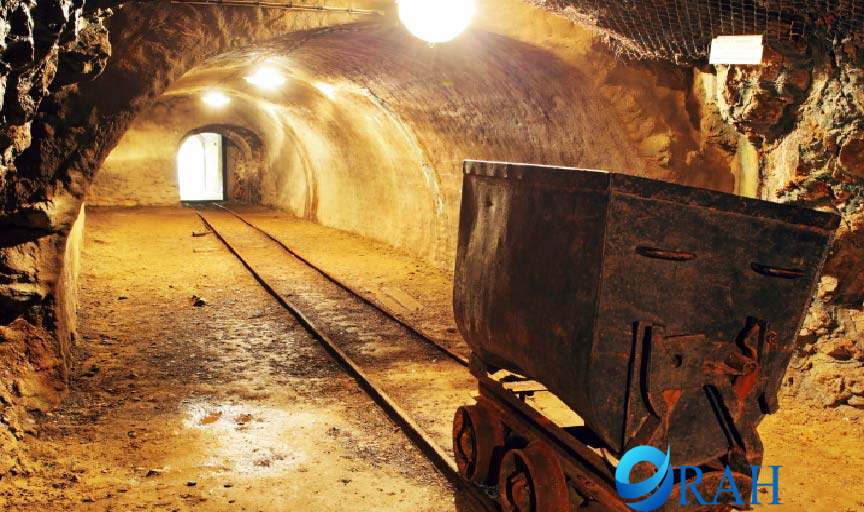Accident Details at Stillwater Mine: What Happened?
A tragic accident occurred recently at the Stillwater Mine in Nye, Montana, resulting in the death of a mine worker. The incident took place during regular operations, bringing to light the inherent risks involved in mining, especially in high-stakes extraction environments like Stillwater, where precious metals are the primary focus. This accident has raised questions about the safety protocols in place and the possible improvements to prevent future incidents. Local authorities and mine management are currently investigating the causes behind the accident, focusing on both mechanical and human factors.
Understanding Stillwater Mine’s Importance and Operations
The Stillwater Mine is one of the largest platinum and palladium extraction sites in the United States. Operated by Sibanye-Stillwater, it plays a significant role in both the local economy and the broader mining industry. Known for its high production capacity and relatively rare output in North America, the mine has become a critical source of employment and economic activity in the region. However, mining these rare metals comes with a unique set of risks, including the handling of complex machinery and the constant pressure to meet production quotas.
Safety Protocols and Standards in Mining Operations
Mining is one of the most hazardous occupations globally, and specific measures are implemented to minimize risks. Standard protocols include regular safety drills, equipment inspections, and training sessions designed to help workers manage potential hazards. Stillwater Mine is known to follow a comprehensive safety plan, which typically includes:
- Routine Safety Drills: Frequent practice for emergency situations such as cave-ins or equipment malfunctions.
- Advanced Training Programs: Regular skill refreshers for workers handling complex machinery or working in confined underground spaces.
- Equipment Checks: Detailed inspections of mining equipment and vehicles to ensure they meet operational safety standards.
These protocols, while essential, are not always foolproof, as evidenced by the recent tragedy.
Investigation and Immediate Response by Authorities
Following the accident, authorities swiftly launched an investigation to determine its cause. The Mine Safety and Health Administration (MSHA), responsible for overseeing safety in mining operations, has stepped in to conduct a thorough assessment of the situation. This investigation will cover:
- Equipment Malfunctions: Whether machinery failure contributed to the accident.
- Environmental Factors: Analysis of the underground conditions, including air quality, temperature, and potential gas exposure.
- Safety Procedure Compliance: Checking if all protocols were adhered to and if there were any lapses in safety measures.
Preliminary findings are expected in the coming weeks, but full results may take longer as the investigation delves deeper into potential systemic issues.
Mining Safety Challenges: A Closer Look
The mining industry faces distinct challenges that complicate efforts to maintain safety. Some of these ongoing issues include:
- Confined Working Spaces: Many miners operate in tight, enclosed areas, which heighten the risks in case of equipment failure or accidents.
- Heavy Machinery Risks: Mining equipment is often heavy, powerful, and complex, making mechanical failures potentially devastating.
- Fatigue Among Workers: Long hours in intense conditions can lead to exhaustion, increasing the likelihood of accidents due to reduced focus and slower reaction times.
These factors make it clear that while safety protocols help, they may not be sufficient without ongoing innovation in equipment and procedural updates.
The Role of Technology in Enhancing Mine Safety
In recent years, technology has been increasingly integrated into mining safety protocols to address some of the industry’s most persistent hazards. Advanced monitoring systems, automated machinery, and wearable safety devices are all part of a growing trend toward a safer mining environment.
- Automated Vehicles: Using autonomous trucks reduces the risks to human drivers in dangerous areas of the mine.
- Wearable Devices for Miners: These devices can monitor vital signs, environmental conditions, and even worker fatigue, sending real-time data to safety officers.
- Predictive Analytics: Data analysis of past incidents can help mine operators identify trends and predict possible future accidents, enabling preventive measures.
Implementing these technologies could further enhance worker safety, although adoption may be slow due to high costs and training requirements.
Past Accidents at Stillwater and Industry Comparisons
While accidents are relatively rare at Stillwater Mine, mining accidents remain a recurring issue in the industry. For instance, the U.S. Bureau of Labor Statistics reports that mining accidents, while on the decline, still result in several fatalities each year. Comparing Stillwater to other mines in the country provides valuable insights into industry-wide safety practices and highlights areas for improvement.
Community Impact and Industry Response
The accident has reverberated through the local community, which relies heavily on the mine for employment and economic stability. Many local residents have expressed grief and concern, urging the mine operators to improve safety measures. Sibanye-Stillwater has pledged full cooperation with the investigation and is expected to review and potentially enhance its safety protocols based on the findings. The company has a responsibility not only to its employees but also to the community that depends on its continued safe operation.
What’s Next? The Future of Mining Safety
As the mining industry evolves, improving safety measures is crucial. Future developments are likely to include a greater reliance on automation and remote monitoring, along with stricter safety regulations. Such advancements will aim to minimize human risk, particularly in high-stakes environments like those found at Stillwater Mine.
The recent tragedy at Stillwater Mine serves as a stark reminder of the dangers inherent in the industry, but it also opens up the opportunity for meaningful advancements in mining safety protocols. The accident has highlighted the need for continuous safety evaluations and for industry leaders to adopt the latest technology to protect their workforce effectively.
For More More Visit, Orah


Leave feedback about this